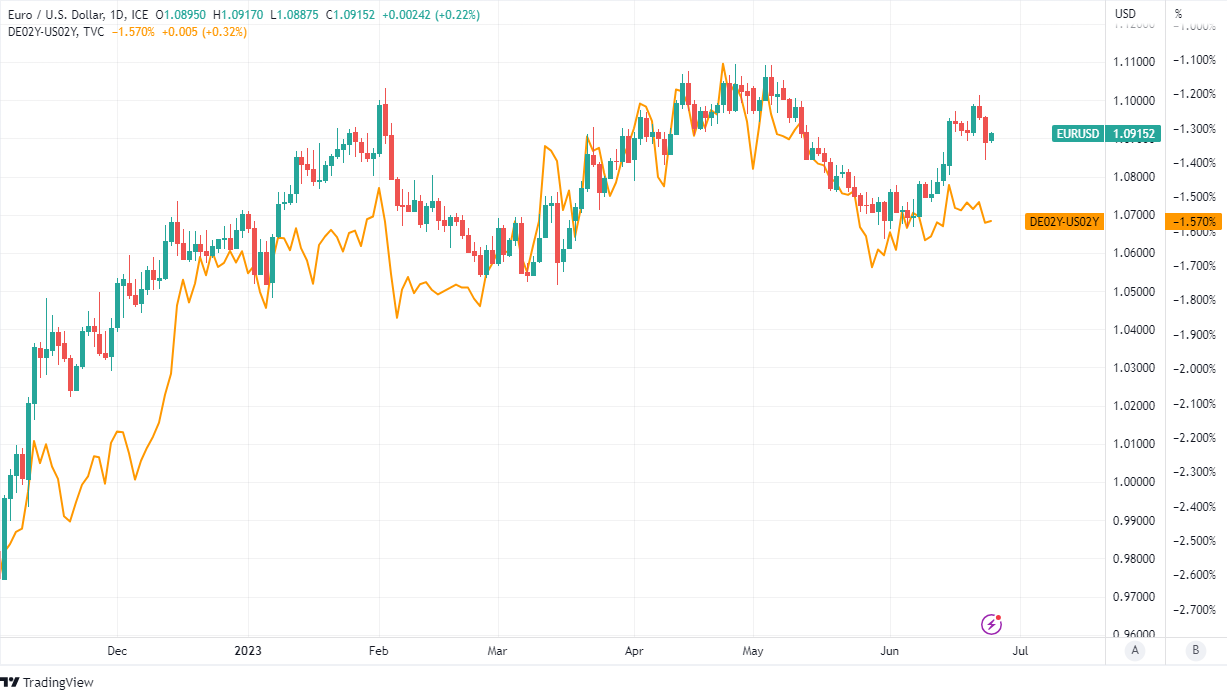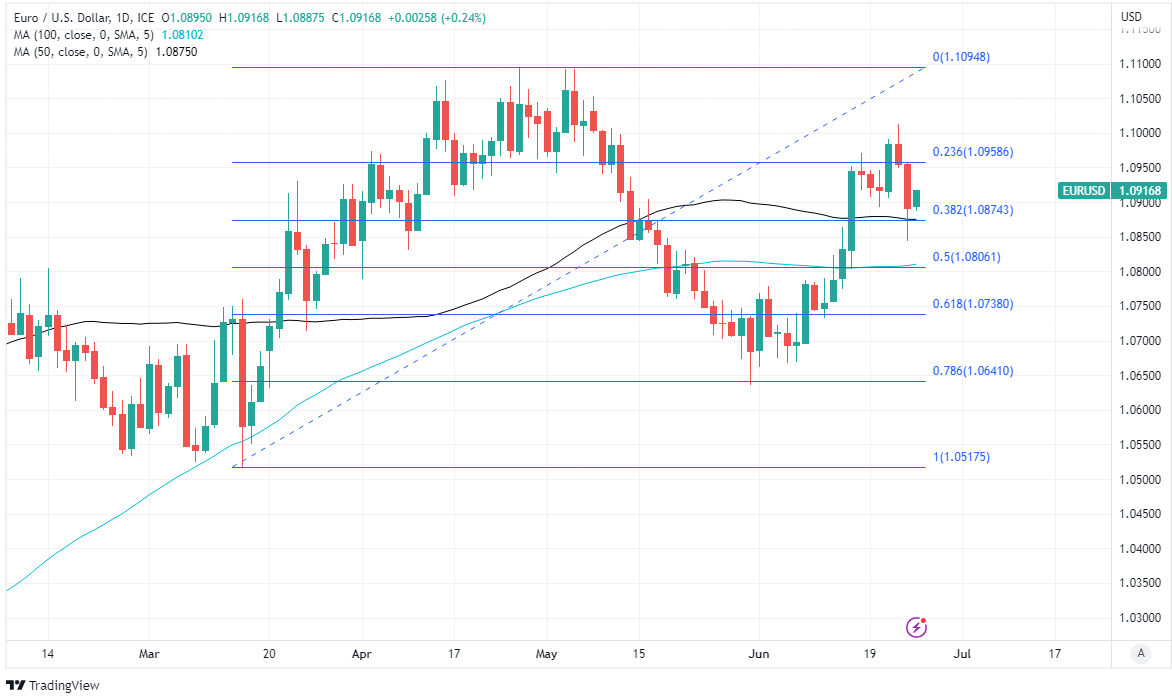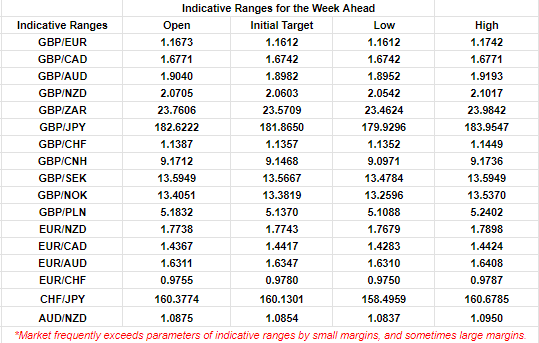EUR/USD Week Ahead Forecast: Inflation Data Lights Path Ahead
- EUR/USD supported near 1.0874 & 1.0806
- With Europe & U.S. inflation figures in focus
- Increase in Europe may dampen EUR/USD
- But ECB & Fed policy commentary also key

Image © European Commission Audiovisual Services
The Euro to Dollar exchange rate has held near June highs in recent trade but inflation figures out on both sides of the Atlantic this Friday will be key to whether the single currency remains well supported over the coming weeks or if it sets a course for a return toward 1.07 or below.
Europe's single currency was sold heavily ahead of the weekend after S&P Global surveys warned of a deepening slowdown in key industries across the continent's major economies but EUR/USD managed to retain much of its June gain and entered the new week trading on the front foot on Monday.
"For our long EUR/USD position this week Euro flash inflation is the key risk (it’ll fall if PPI is any guide), Sintra (do Global central banks co-ordinate and change the message?) and US initial jobless claims (all leading indicators suggest the labour market softness is real, but weekly data can be volatile)," says Jordan Rochester, a strategist at Nomura.
"We maintain the view that it won’t take long for the recent EUR/USD whipsaw to end and that the situation for EUR in 2023 is almost opposite that of 2021. Energy prices are likely to stay low or fall, thanks to the global economy slowdown, supporting the euro area’s terms of trade," he adds.
Reports of recessionary conditions in manufacturing and services industries rhymed with recent official data covering the industrial sector and did not look out of place against the backdrop of a technical recession in Europe but inflation and European Central Bank (ECB) interest rate policy likely matter much more for EUR/USD outlook.

Above: Euro to Dollar rate shown alongside spread or gap between 02-year German and UK bond yields.
Currency and bond markets could get fresh insight on the European Central Bank policy stance as soon as Wednesday when President Christine Lagarde leads the annual Policy Panel discussion at the ECB Forum on Central Banking in Sintra, Portugal.
Though President Lagarde and colleagues already made clear in this month's policy press conference that Governing Council members are most concerned about core inflation - non-energy and food inflation - proving more stubborn than the overall inflation rate due to accelerating wage growth that has eased the squeeze on 'real income.'
"During the press conference Christine Lagarde admitted increasing downside risks associated with tighter financial conditions, but at the same time reiterated that there are still inflationary risks, not least because of the recent negotiated wage agreements," says Nerijus Maciulis, a strategist at Swedbank.
"We maintain our forecast, that the ECB will raise interest rates by 25 basis points in June and July, bringing deposit rate to 3.75%. However, tightening financial conditions increase the probability, that the ECB will end hikes sooner. We do not expect any interest rate cuts this year," he adds.
Any reiteration of hawkish resolve on Wednesday would magnify the importance of Friday's European and U.S. inflation figures for the Euro to Dollar rate.
Above: Quantitative model estimates of ranges for this week. Source Pound Sterling Live.
The economist consensus suggests Europe's core inflation rate rose from 5.3% to 5.5% this month and even as the overall inflation rate fell from 6.1% to 5.6%, which could lead the ECB to conclude that it has a problem with homegrown inflation while also potentially having implications for 'real' or inflation-adjusted bond yields.
"Real rate spreads would argue 1.06 to 1.05 in EURUSD," says Nomura's Rochester, who recently advocated buying EUR/USD around 1.08 and looking for a move up to 1.15. "We suspect in H2 the US CPI outlook will look a good deal weaker than in Europe (but both will be lower, I should add, just in relative terms Europe is likely to have stickier core inflation as the lags play out)."
Many analysts say the interest rate implications of rising inflation should make it a supportive influence for any currency but financial market responses to inflation data have been variable over time including across currencies, while market-implied expectations for ECB interest rates have not moved much in recent weeks.
Real or inflation-adjusted yields would come under pressure in Europe this week if local inflation rises or in any scenario where the preferred inflation measure of the Federal Reserve falls further with potentially adverse implications for EUR/USD, though the economist consensus also sees the U.S. Core PCE inflation rate edging higher on Friday.
"Our economists expect a 45bp m/m core print in the Euro area this week, up from 32bp last month. We think that would be a concerning reacceleration and place the ECB in a tough spot between sticky inflation but weaker growth after last week’s PMIs," says Sid Bhushan, an economist at Goldman Sachs.

Above: Euro to Dollar rate shown at daily intervals with Fibonacci retracements of March increase suggesting possible areas of technical support. Selected moving averages also denote prospective support and/or resistance for the single currency.

